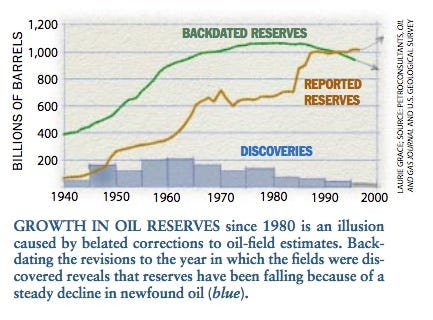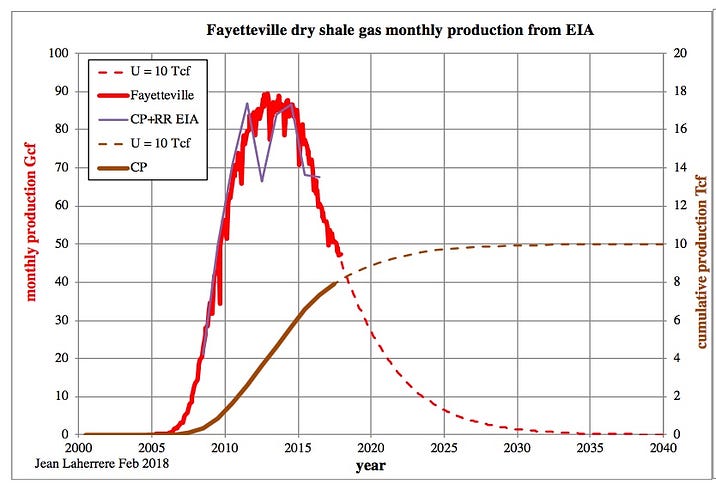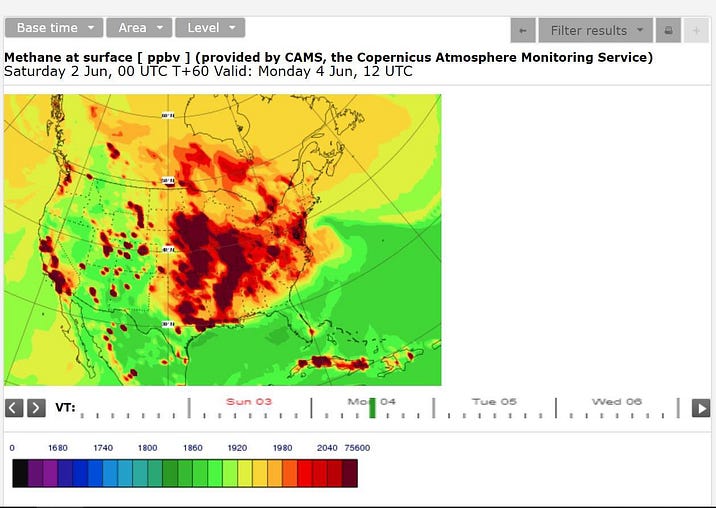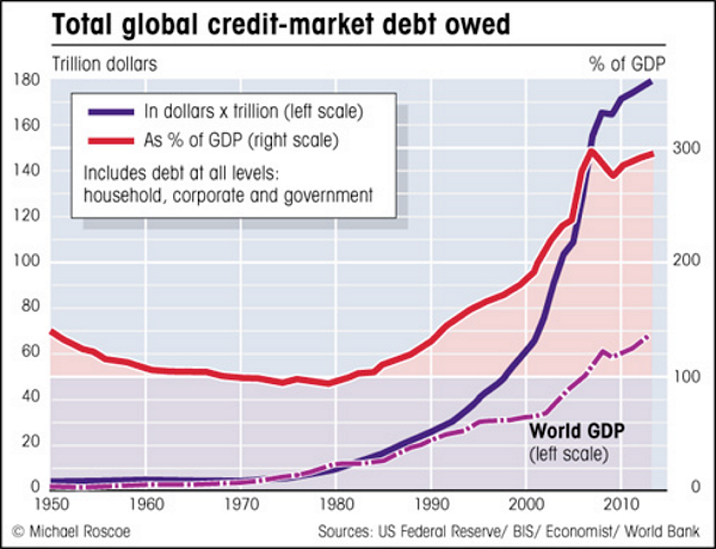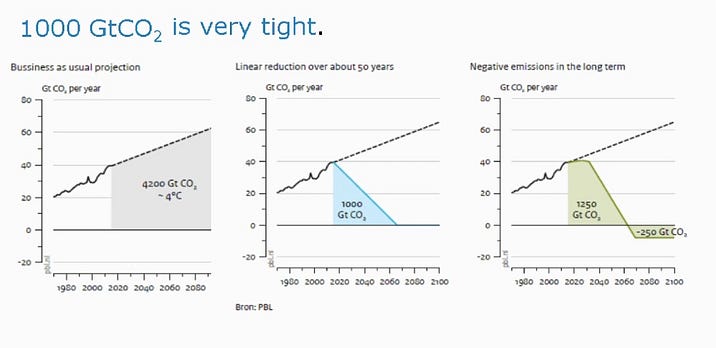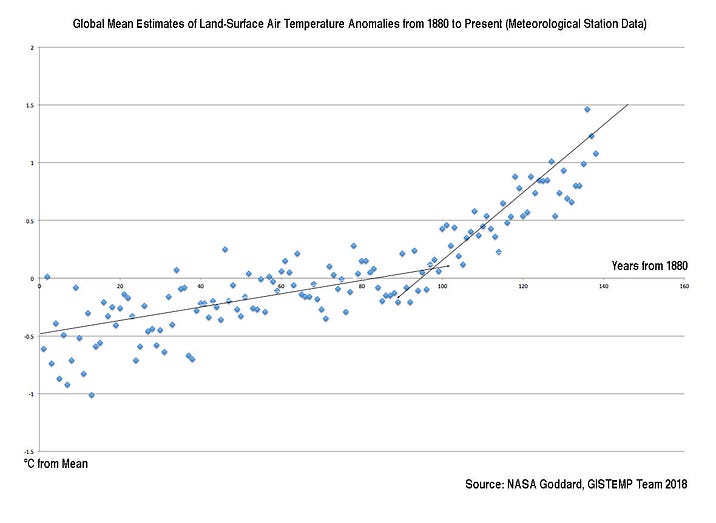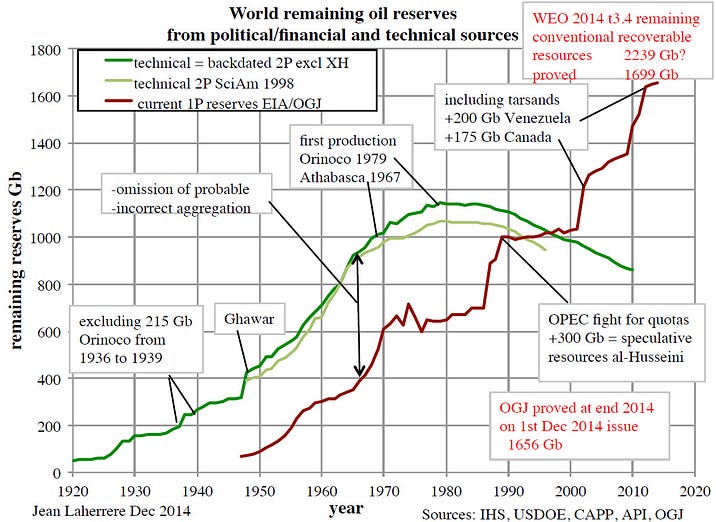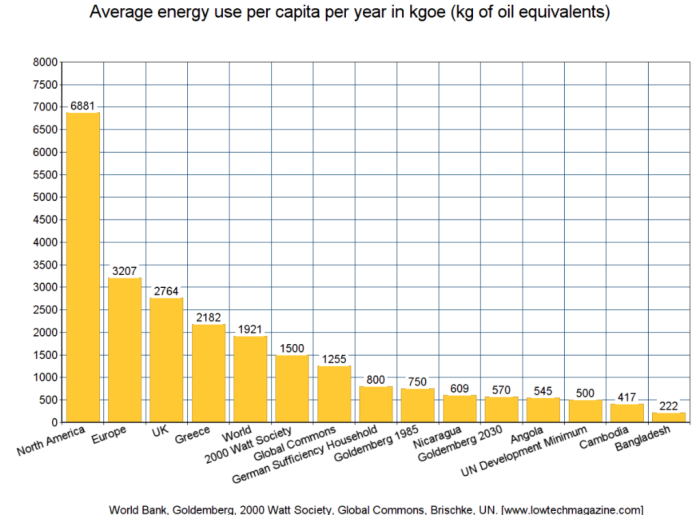In the three weeks since the new Conservative government of Ontario took office, they have worked swiftly to reverse the green legacy of the previous government, along with other regressive moves. This is happening in spite of having had a reasonable, centre-right platform only three months earlier. How did this happen?
It’s worth looking at the series of unfortunate events which have led to Canada’s largest province turning a shade much uglier than green before cataloguing the actions they have taken to move into the past.
The Progressive Conservative Party of Ontario has been out of power in Ontario for 15 years. During those years the Liberal party under Dalton McGuinty and then Kathleen Wynne had a series of majority and minority governments and had created a strong track record of cleaning up the province. They had pledged to and successfully eliminated coal-fired electricity generation, getting rid of 37 millions tons of CO2 emissions and 55 seriously bad air days a year in the process.
Their efforts shaped Ontario into a global leader in wind and solar generation, and not coincidentally also led the world in anti-wind health hysteria. They had mostly fixed the long term mismanagement of Ontario Hydro so that it was both paying for itself and paying down its decades-old nuclear debt, or at least finally servicing the interest on the debt. To further drive reductions in emissions, the administration implemented a carbon cap-and-trade program in partnership with California and Quebec.
Parallel work in the transportation sector resulted in one of the strongest electric vehicle incentive programs in the world. The progressive government implemented a modern, evidence-based sexual education curriculum that included consent, LGBTQ awareness and transgender awareness which social conservatives were convinced signaled the end of times.
All of this was accomplished as the Liberal’s kept the economy chugging along in the wake of global labor arbitrage and flight of manufacturing. Though it maintained a high debt load, Canada’s GDP made it the 18th largest country in the world, with a lower debt-to-GDP ratio than most countries. Until recently, Ontario was the California of Canada when viewed through these lenses. Not any more.
...
Doug Ford has taken Ontario’s reasonable set of environmental policies and a transformation that was positive overall and is regressing it rapidly, ignorantly and with likely much more expensive overall results.
If this looks like a lot of chaos and regressive policies from several decades in the past that will invariably cause businesses to avoid Ontario in greater numbers, that’s because it is. If it looks like policies that are bad for the people of Ontario, that’s because they are. If it looks like a set of decisions which are bad for the environment and the health of people in Ontario, that’s because it is. If this looks like a populist claiming early wins with complete disregard for consequences, that’s because it is.
Ontario and Toronto have benefited globally from being progressive, having clean air, from being safe for people of all genders and sexual preferences, and from having stable, well-thought through policies. That’s in the past now.
Pope warns climate change turning Earth into desert, garbage dump. Nicole Winfield, AP. July 6, 2018.
Pope Francis urged governments on Friday to make good on their commitments to curb global warming, warning that climate change, continued unsustainable development and rampant consumption threatens to turn the Earth into a vast pile of “rubble, deserts, and refuse.”
Francis made the appeal at a Vatican conference marking the third anniversary of his landmark environmental encyclical “Praise Be.” The document, meant to spur action at the 2015 Paris climate conference, called for a paradigm shift in humanity’s relationship with Mother Nature.
In his remarks, Francis urged governments to honor their Paris commitments and said institutions like the IMF and World Bank had important roles to play in encouraging reforms promoting sustainable development.
“There is a real danger that we will leave future generations only rubble, deserts and refuse,” he warned.
…
Next year, Francis has called a three-week synod, or meeting of bishops, specifically to address the church’s response to the ecological crisis in the Amazon, where deforestation threatens what he has called the “lung” of the planet and the indigenous peoples who live there.
“It grieves us to see the lands of indigenous peoples expropriated and their cultures trampled on by predatory schemes and by new forms of colonialism, fueled by the culture of waste and consumerism,” Francis said Friday.
Earth's resources consumed in ever greater destructive volumes. Jonathan Watts, Guardian. July 23, 2018.
Humanity is devouring our planet’s resources in increasingly destructive volumes, according to a new study that reveals we have consumed a year’s worth of carbon, food, water, fibre, land and timber in a record 212 days.
As a result, the Earth Overshoot Day – which marks the point at which consumption exceeds the capacity of nature to regenerate – has moved forward two days to 1 August, the earliest date ever recorded.
To maintain our current appetite for resources, we would need the equivalent of 1.7 Earths, according to Global Footprint Network, an international research organisation that makes an annual assessment of how far humankind is falling into ecological debt.
The overshoot began in the 1970s, when rising populations and increasing average demands pushed consumption beyond a sustainable level. Since then, the day at which humanity has busted its annual planetary budget has moved forward.
Thirty years ago, the overshoot was on 15 October. Twenty years ago, 30 September. Ten years ago, 15 August. There was a brief slowdown, but the pace has picked back up in the past two years. On current trends, next year could mark the first time, the planet’s budget is busted in July.
While ever greater food production, mineral extraction, forest clearance and fossil-fuel burning bring short-term (and unequally distributed) lifestyle gains, the long-term consequences are increasingly apparent in terms of soil erosion, water shortages and climate disruption.
The day of reckoning is moving nearer, according to Mathis Wackernagel, chief executive and co-founder of Global Footprint Network.
“Our current economies are running a Ponzi scheme with our planet,” he said.
“We are borrowing the Earth’s future resources to operate our economies in the present. Like any Ponzi scheme, this works for some time. But as nations, companies, or households dig themselves deeper and deeper into debt, they eventually fall apart.”
Our phones and gadgets are now endangering the planet. John Harris, Guardian. July 17, 2018.
The energy used in our digital consumption is set to have a bigger impact on global warming than the entire aviation industry
Global temperature rises could be double those predicted by climate modelling. Lisa Cox, Guardian. July 5, 2018.
Researchers say sea levels could also rise by six metres or more even if 2 degree target of Paris accord met
Temperature rises as a result of global warming could eventually be double what has been projected by climate models, according to an international team of researchers from 17 countries.
...
Meissner said potential changes even at two degrees of warming were underestimated in climate models that focused on the near term.
“Climate models appear to be trustworthy for small changes, such as for low-emission scenarios over short periods, say over the next few decades out to 2100,” she said. “But as the change gets larger or more persistent ... it appears they underestimate climate change.”
The researchers looked at three documented warm periods, the Holocene thermal maximum, which occurred 5,000 to 9,000 years ago, the last interglacial, which occurred 116,000 to 129,000 years ago, and the mid-Pliocene warm period, which occurred 3m to 3.3 m years ago.
In the case of the first two periods examined, the climate changes were caused by changes in the earth’s orbit. The mid-Pliocene event was the result of atmospheric carbon dioxide concentrations that were at similar levels to what they are today.
In each case, the planet had warmed at a much slower rate than it is warming at today as a result of rising greenhouse gas emissions caused by humans.
“Observations of past warming periods suggest that a number of amplifying mechanisms, which are poorly represented in climate models, increase long-term warming beyond climate model projections,” Prof Hubertus Fischer of the University of Bern, one of the study’s lead authors.
“This suggests the carbon budget to avoid 2°C of global warming may be far smaller than estimated, leaving very little margin for error to meet the Paris targets.”
Permafrost and wetland emissions could cut 1.5C carbon budget ‘by five years’. Robert McSweeney, CarbonBrief. July 9, 2018.
Emissions of CO2 and methane from wetlands and melting permafrost as the climate warms could cut the “carbon budget” for the Paris Agreement temperature limits by around five years, a new study says.
These natural processes are “positive feedbacks” – so called because they release more greenhouse gases as global temperatures rise, thus reinforcing the warming. They have previously not been represented in carbon budget estimates as they are not included in most climate models, the researchers say.
Business strategies failing to keep pace with the need to decarbonise. Grantham Research Institute on Climate Change, LSE. July 2, 2018.
Transition Pathway Initiative new analysis of the electricity, coal and oil and gas sectors
We still have no idea how to eliminate more than a quarter of energy emissions. James Temple, MIT Technology Review. June 28, 2018.
Air travel, shipping, and manufacturing are huge sources of carbon that we lack good options for addressing.
Public economics as if time matters: Climate change and the dynamics of policy. Nicholas Stern, via ScienceDirect. June 2018.
Abstract
Tony Atkinson played a crucial role in shaping modern public economics, but throughout his life challenged whether we were making the right assumptions and were building models which captured the essence of the issues under examination. This paper examines questions discussed with Tony concerning public policy to foster change where the pace and nature of change are critical to any serious policy assessment. The primary example is climate change.
The paper argues that subjects such as the dynamics of innovation, of potentially immense and destabilising risks, and of political economy, together with technicalities around non-linearities and dynamic increasing returns, all of which are at the heart of the challenge of climate change, will require a series of focused models for their investigation. Attempts to build integrated assessment models (IAMs) for the analysis of climate change have been largely misplaced and omit key effects and questions of the above kind. Intertemporal issues and values are at the core of policy towards climate change and the paper shows that much of the intertemporal economic analysis of the issues around climate change has been misguided and has ridden roughshod over the analytical underpinnings and the underlying ethics of discounting. Where major decline is possible, discounting is fiercely endogenous; and where capital markets are imperfect and risk intense, discount rates cannot be read off from markets.
Notwithstanding the modelling difficulties and the challenging research agenda, the paper argues that the urgency of the problem (for example, world infrastructure will double in the next 15–20 years and there are major dangers of lock-in of dirty and damaging capital) require strong action and we know enough about policy to begin travelling down the path of an attractive low-carbon transition.
“There is no walking out from the energy transition.”
Ten years ago Blockbuster CEO Jim Keyes said he wasn’t worried about digital streaming. “I’ve been frankly confused by this fascination that everybody has with Netflix,” he said. Blockbuster’s head of digital strategy echoed this sentiment, asserting the company was “strategically better positioned than almost anybody out there.” Not long after, Blockbuster went the way of the butter churn, while Netflix became a household fixture. Today, the movie streaming service is worth almost as much as Disney.
To most people, that’s a funny story about the hubris of a technological dinosaur. Imagine, however, if Blockbuster had been a cornerstone of the U.S. economy, that millions of people had been employed in the manufacture and sales of Jurassic Park DVDs, that there were hundreds of cities dotting the South and Midwest where brick-and-mortar video rental was the only job in town. Then, the collapse of Blockbuster wouldn’t be so funny. It would be a catastrophe.
This, experts warn, could be the future of fossil fuels.
Wind turbines, solar panels and electric vehicles are getting cheaper and more abundant by the day, which is hurting demand for coal, oil and natural gas. As demand falls for conventional fuels, so will prices. Companies that laid claim to coal mines or oil wells, won’t be able to turn a profit by digging up that fuel. They will default on their loans, pushing banks to the brink of failure. Prices are likely to crash before 2035, costing the global economy as much as $4 trillion, according to a new study published in the journal Nature Climate Change.
...
“Traditionally, fossil fuel companies have been considered very safe and very profitable industries with high returns, if you were to invest in their shares. Now, this may be changing,” said Jean-Francois Mercure, professor of energy, climate and innovation at Radboud University in the Netherlands and lead author of the study.
“It requires institutions to properly reassess the risk in their portfolios,” he said. “This transparency needs to start to happen, because they need to know what their money is ultimately invested in. This really reminds us a lot of what happened in 2008 with the financial crisis, where there was a lot of repackaging of assets, and people didn’t really know what they owned until they realized those assets weren’t paying off.”
Mercure and an international team of economists and policy analysts modeled the future of fossil fuels under a variety of scenarios, examining what will happen if countries hew closely to targets of the Paris Climate Agreement, and what will happen if they don’t.
What’s remarkable is that fossil fuels are likely to go bust whether or not countries take climate change seriously. The rapid pace of technological progress will transform the energy sector. Researchers say the only way to guard against the impending collapse in the price of conventional fuels is to accelerate the transition to clean energy, ensuring investors and fossil fuel firms aren’t caught flat-footed when oil, gas and coal bottom out.
Researchers caution against subsidizing fossil fuels — a strategy akin to forcing Netflix users to rent movies from Blockbuster. The only viable strategy, they say, is to reduce the systemic importance of fossil fuels by accelerating the transition to clean energy. Mercure recommends retraining coal, oil and gas workers for jobs in clean energy.
Viñuales laid out five goals for investors and policymakers. “First, don’t invest more resources in fossils,” he said. “Second, if you have fossil fuels already invested, try to divest them, at least significantly. Third, if you’re a fossil fuel company, try to diversify as much as you can while you’re still alive. Fourth, if you’re a policymaker, don’t adopt policies that are conducive to more investment in fossil fuels, because that is going to be bad for your country. Fifth, if you are in the geopolitical game, you have to consider what could happen to you.”
Climate Change & The Alien Apocalypse. Steve Hanley, CleanTechnica. July 3, 2018.
A collection of researchers from the fields of astrobiology and biogeochemistry have developed sophisticated new computer models designed to determine if human life on Earth is sustainable. The indications are not very hopeful.
The authors are among the first to ask what is really the threshold question when it comes to discussing climate change — how do we know if sustainability is even possible? Are there planets in the universe that have developed sustainable civilizations or does every civilizations consume all the available resources and then disappear after a few centuries or millenia? “If we’re not the universe’s first civilization,” Frank says, “that means there are likely to be rules for how the fate of a young civilization like our own progresses.”
As reported by Science Daily, he and his colleagues suggest a civilization changes the planet’s conditions at it consumes resources, which means civilizations and planets don’t evolve separately from one another. Rather they evolve interdependently, and the fate of our own civilization depends on how we use Earth’s resources.
...
The researchers developed four potential scenarios that might occur in a closed civilization/planet system such as we have here on Earth.
- Die-off: The population and the planet’s state (indicated by something like its average temperature) rise very quickly. Eventually, the population peaks and then declines rapidly as the rising planetary temperature makes conditions harder to survive. A steady population level is achieved, but it’s only a fraction of the peak population. “Imagine if 7 out of 10 people you knew died quickly,” Frank says. “It’s not clear a complex technological civilization could survive that kind of change.”
- Sustainability: The population and the temperature rise but eventually both come to steady values without any catastrophic effects. This scenario occurs in the models when the population recognizes it is having a negative effect on the planet and switches from using high-impact resources, such as oil, to low-impact resources, such as solar energy.
- Collapse without resource change: The population and temperature both rise rapidly until the population reaches a peak and drops precipitously. In these models, civilization collapses, although it is not clear if the species itself completely dies outs.
- Collapse with resource change: The population and the temperature rise, but the population recognizes it is causing a problem and switches from high-impact resources to low-impact resources. Things appear to level off for a while, but the response turns out to have come too late, and the population collapses anyway.
“The last scenario is the most frightening,” Frank says. “Even if you did the right thing, if you waited too long, you could still have your population collapse.”
...
Frank issues a sober warning. “If you change the Earth’s climate enough, you might not be able to change it back,” he says. “Even if you backed off and started to use solar or other less impactful resources, it could be too late, because the planet has already been changing. These models show we can’t just think about a population evolving on its own. We have to think about our planets and civilizations co-evolving.”
Precious little of that thinking is going on in the highest circles of world governments, where officials still do not grasp that the continued use of fossil fuels is a death sentence for every living thing on Earth. Profits and shareholder value will be meaningless when we are all dead.
more here:
Are all societies destined to destroy themselves? World Economic Forum. June 7, 2018.
The Anthropocene Generalized: Evolution of Exo-Civilizations and Their Planetary Feedback. Astrobiology. May 2018.
We present a framework for studying generic behaviors possible in the interaction between a resource-harvesting technological civilization (an exo-civilization) and the planetary environment in which it evolves. Using methods from dynamical systiems theory, we introduce and analyze a suite of simple equations modeling a population which consumes resources for the purpose of running a technological civilization and the feedback those resources drive on the state of the host planet. The feedbacks can drive the planet away from the initial state the civilization originated in and into domains that are detrimental to its sustainability. Our models conceptualize the problem primarily in terms of feedbacks from the resource use onto the coupled planetary systems. In addition, we also model the population growth advantages gained via the harvesting of these resources.
We present three models of increasing complexity:
(1) Civilization-planetary interaction with a single resource;
(2) Civilization-planetary interaction with two resources each of which has a different level of planetary system feedback;
(3) Civilization-planetary interaction with two resources and nonlinear planetary feedback (i.e.,runaways).
All three models show distinct classes of exo-civilization trajectories. We find smooth entries into long-term, “sustainable” steady states. We also find population booms followed by various levels of “die-off.” Finally, we also observe rapid “collapse” trajectories for which the population approaches n = 0. Our results are part of a program for developing an “Astrobiology of the Anthropocene” in which questions of sustainability, centered on the coupled Earth-system, can be seen in their proper astronomical/planetary context. We conclude by discussing the implications of our results for both the coupled Earth system and for the consideration of exo-civilizations across cosmic history.
Analysis: ‘Global’ warming varies greatly depending where you live. Zeke Hausfather, Carbon Brief. July 2, 2018.
Ecology: The Keystone Science. William Hawes, counterpunch. July 3, 2018.
A missing piece from most critiques of modern capitalism revolves around the misunderstanding of ecology. To put it bluntly, there will be no squaring the circle of mass industrial civilization and an inhabitable Earth. There is no way for energy and resource use, along with all the strife, warfare, and poverty that comes along with it, to continue under the business as usual model that contemporary Western nations operate under.
There is also the problem of constructing millions of solar panels and gigantic wind farms to attempt to bring the entire world’s population to a middle class existence based on a North American, or even European levels of energy use. All of the hypothetical robots and artificial intelligence to be constructed for such a mega-endeavor needed to enact such a project would at least initially rely on fossil fuels and metals plundered from the planet, and only lead to more rapacious destruction of the world.
The dominant technological model is utterly delusional. Here I would urge each of us to consider our “human nature” (a problematic term, no doubt) and the costs and the manner of the work involved: if each of us had to kill a cow for food, would we? If each of us had to mine or blast a mountain for coal or iron, or even for a wind turbine, would we do it? If each of us had to drill an oil well or bulldoze land for a gigantic solar array next to many endangered species or a threatened coral reef, would we?
My guess would be no, for the vast majority of the population. Instead, we employ corporations and specialists to carry out the dirty work in the fossil fuel industries and animal slaughtering, to name just a few. Most of us in the West have reaped the benefits of such atrocities for the past few centuries of the industrial revolution. That era is coming to a close, and there’s no turning back.
The gravy train is running out of steam, and our age of comfort and the enslavement of a global proletariat to produce and gift-wrap our extravagances will hopefully be ending shortly, too. Some may romanticize loggers, factory workers, oil drillers, coal miners, or steel foundries but the chance is less than a needle through a camel’s eye that those jobs are coming back in a significant way. Overpopulation in much of the world continues to put strain upon habitat and farmlands to provide for the Earth’s 7.5 billion and growing humans.
Tragically, many with the most influence on the Left today, such as Sanders, Corbyn, and Melenchon want to preserve industrial civilization. Theirs is an over-sentimental outlook which warps their thinking to want to prop up a dying model in order to redistribute wealth to the poor and working classes.
Empathy for the less fortunate is no doubt a good thing, but the fact remains that the real wealth lies in our planet’s natural resources, not an artificial economy, and its ability to regenerate and provide the fertile ground upon which we all rely. If we follow their narrow path, we are doomed.
...
Only a serious education in ecology for a significant minority of the globe’s workforce can allow for a return to naturally abundant and life-enhancing complex habitats for humanity and all species to thrive. Understandably, fields such as botany, zoology, and conservationism are not for everyone, as much of humanity has been and continue to be more interested in technological fields, the arts, music, sports, religion, etc. It would only take perhaps 10% of the globe to be critically informed, and to be able to act, deliberatively and democratically, about subjects relating to ecosystem preservation and all the attendant sub-fields for a functional, ecocentric culture to flourish.
Thankfully, the foundation of such an ecological vision has been laid by millennia of indigenous cultures, as well as modern prophets and science whizzes such as Rachel Carson, Fritjof Capra, James Lovelock, Lynn Margulis, Barry Commoner, Donella Meadows, Bill Mollison and David Holmgren, Masanobu Fukuoka, and many others.
Even Marx and Engels observed the basic deteriorating nature of advanced agriculture in what they termed “metabolic rift”, where they learned from European scientists of the overwhelming degradation of soil fertility on the continent due to poor farming techniques, razing of forests, and heavy industry.
It's well known that human population is increasing relentlessly, with no peak in sight for at least the next century. Various projections estimate that the population will be somewhere in the neighborhood of ten to twelve billion by the year 2100 (cf. New projection shows human population could reach 12 billion by 2100).
Less well known is the fact that carbon emissions per capita are increasing relentlessly as well. As human population grows, it emits carbon at an exponentially greater rate per person. Only two periods in modern history have broken this rule, both characterized by abrupt, global, economic dislocations. As soon as the conditions that caused the dislocations are resolved, exponential growth returns immediately (cf. Graph of the Day: Carbon emissions and human population, 1751-2013).

Carbon emitted per capita surpassed one ton per person in 1968 and has never fallen below this value since then. Extrapolating shows that emissions per capita will surpass two tons per person around the year 2050.
Desdemona has long argued that because human population is always increasing, and because more humans are enjoying an increasing standard of living (and consuming an ever-increasing amount of energy per person), we'll be forced to throw everything we have at the problem of powering civilization. This means that there will be little substitution away from fossil fuels; solar and wind energy won't replace coal and oil. We will need it all.
Now we have the first solid evidence that this is the case. The 2018 edition of BP's Statistical Review of World Energy has this remarkable graph:

As a percentage of the total energy mix, coal and oil are just as important as they were in 1997. During most of this period, the price of coal has fluctuated between $50 and $100 per ton; there is no evidence of a collapse in demand for coal, or even a noticeable reduction. The percentage of energy contributed by alternative energy decreased for much of this period, and only recently has recovered to near its 1997 value.

Spencer Dale, BP's group chief economist, summarizes it this way:
Despite the extraordinary growth in renewables in recent years, and the huge policy efforts to encourage a shift away from coal into cleaner, lower carbon fuels, there has been almost no improvement in the power sector fuel mix over the past 20 years. The share of coal in the power sector in 1998 was 38 percent – exactly the same as in 2017 – with the slight edging down in recent years simply reversing the drift up in the early 2000s associated with China’s rapid expansion. The share of non-fossil in 2017 is actually a little lower than it was 20 years ago, as the growth of renewables hasn’t offset the declining share of nuclear. … To have any chance of getting on a path consistent with meeting the Paris climate goals, there will need to be significant improvements in the power sector. But this is one area where at the global level we haven’t even taken one step forward, we have stood still, perfectly still, for the past 20 years. This chart should serve as a wake-up call for all of us.
In the shadow of a massive increase in human population – at least 32 percent by 2100 – the only hope is that energy efficiency increases enormously in the immediate future. But in spite of recent optimistic declarations that economic activity has finally “decoupled” from carbon emissions, there’s little evidence that this is happening. Carbon emissions increased by 1.6 percent in 2017, after a couple of years of staying flat, and the ratio of Primary Energy Consumption to World Economic Growth Rate shows that 2017 is almost exactly on the established trend line.

It’s possible that a massive increase in energy efficiency will deflect this curve downward at some point in the future, but there’s no evidence that this happening.
We've seen other hopeful trends from early in the new century reverse abruptly, like deforestation (cf. 2017 was the second-worst year on record for global deforestation). As long as human population continues its inexorable increase – adding 83 million people per year – we can expect to be disappointed many more times.
Young Leftist Candidates Are Breathing New Radicalism Into Stale Climate Politics. Kate Aronoff, The Intercept. July 5 2018.
Conservative estimates suggest that greenhouse gas emissions in industrialized nations like the U.S. begin rapidly declining after 2020. For just a two-thirds chance of meeting the Paris Agreement’s 2 degree celsius warming target, emissions in such places need to draw down to zero by 2050. And even that scenario assumes that so-called negative emissions technologies that can suck carbon out of the atmosphere will be by that point deployable at scale. Though most climate models assume these technologies will soon or already exist, they currently don’t — at least not in any meaningful way. Without them, the timeline for decarbonization gets much shorter and means shutting down every coal- and gas-fired power plant and taking every single oil-fired, combustion engine car off the road worldwide within a decade. Alas, Kevin Anderson, deputy director of the U.K.’s Tyndall Center for Climate Change Research, told me last year, “We have to mitigate as if these negative emissions technologies do not work.”
...
Climate scientists aren’t prone to mince words about how tall the task of staying below even 2 degrees will be. Anderson estimates we have about a 5 percent shot at getting there. Like Ocasio-Cortez, he says it will require a massive mobilization “similar to the Marshall Plan we had in the reconstruction of Europe after the Second World War, when the continent was basically flattened and we had to start almost from scratch,” noting that such a program would need to both scale up clean energy and radically scale down fossil fuels, not just expect one to outcompete the other on the free market. “It’s that scale and rate of change that will be necessary to deliver an infrastructure that will allow us to meet our 2 degree commitment.”
One football pitch of forest lost every second in 2017, data reveals. Damian Carrington, Niko Kommenda, Pablo Gutiérrez, and Cath Levett. The Guardian, June 27, 2018.
Global deforestation is on an upward trend, jeopardising efforts to tackle climate change and the massive decline in wildlife.

The world lost more than one football pitch of forest every second in 2017, according to new data from a global satellite survey, adding up to an area equivalent to the whole of Italy over the year.
...
“This is truly an urgent issue that should be getting more attention,” she said. “We are trying to put out a house fire with a teaspoon.”
DRC’s political turmoil puts Congo Basin rainforest in the crosshairs. Unearthed / Greenpeace. July 20, 2018.
Moves by the disputed President of the Democratic Republic of Congo Joseph Kabila to grant oil and logging licences in the world’s second largest rainforest have thrown efforts to protect the area into disarray, potentially weakening the push to avert the worst consequences of climate change.
Red-hot planet: All-time heat records have been set all over the world during the past week. Jason Samenow, WashPo. July 5, 2018.
including:
heat is to blame for at least 54 deaths in southern Quebec, mostly in and near Montreal
also 40 degrees above normal in Siberia; 124 degrees in Algeria.
Tens of thousands of Kenyans go hungry after floods - aid agencies. Nita Bhalla, Thomson Reuters Foundation. July 4, 2018.
After a severe drought last year, East Africa was hit by two months of heavy rains, disrupting the lives of millions of people in Kenya, Somalia, Ethiopia, and Uganda.
Tens of thousands of survivors of Kenya's worst floods in recent years are living on the brink with barely enough food to eat two months after the disaster, aid workers warned
India's 'worst water crisis in history' leaves millions thirsty. Annie Banerji, Thomson Reuters Foundation. July 6, 2018.
From the northern Himalayas to the sandy, palm-fringed beaches in the south, 600 million people - nearly half India's population - face acute water shortage, with close to 200,000 dying each year from polluted water.
Storms, landslides and heat hit Asia. CNN. July 23, 2018.
Japan's deadly heat wave declared a natural disaster as death toll continues to rise. Accuweather. July 24, 2018.
Kyoto has had temp above 38C for 7 consecutive days
A Global Heat Wave Has Set the Arctic Circle on Fire. Adam K. Raymond, New York Mag. July 20, 2018.
In Greece, Wildfires Kill Dozens, Driving Some Into the Sea. NYT. July 24, 2018.
Highland cropland expansion and forest loss in Southeast Asia in the twenty-first century. Zeng et al, Nature Geoscience. July 2, 2018.
The report shows a loss of 29.3 million hectares of forest (roughly 113,000 square miles or about twice the size of New York State) between 2000 and 2014. Zeng said that represents 57 percent more loss than current estimations of deforestation made by the International Panel on Climate Change. He said most of the forest has been cleared for crops.
Because forests absorb atmospheric carbon, and burning forests contribute carbon to the atmosphere, loss of forests could be devastating. An accurate estimation of forest cover also is critical for assessments of climate change. Zeng also said transformation of mountainous regions from old forest to cropland can have widespread environmental impacts from soil retention to water quality in the region.
Amazon deforestation in Brazil up 108% in June 2018. Desdemona Despair. July 22, 2018.
Rising seas: 'Florida is about to be wiped off the map'. Elizabeth Rush, Guardian. June 26, 2018.
Harold Wanless, or Hal, chair of the geology department, speak about sea level rise. “Only 7% of the heat being trapped by greenhouse gases is stored in the atmosphere,” Hal begins. “Do you know where the other 93% lives?”
“In the ocean,” Hal continues. “That heat is expanding the ocean, which is contributing to sea level rise, and it is also, more importantly, creating the setting for something we really don’t want to have happen: rapid melt of ice.”
...
On the screen above his head clips from a documentary on climate change show glacial tongues of ice the size of Manhattan tumbling into the sea. “The big story in Greenland and Antarctica is that the warming ocean is working its way in, deep under the ice sheets, causing the ice to collapse faster than anyone predicted, which in turn will cause sea levels to rise faster than anyone predicted.”
...
The clip begins again and I watch in awe as a section of the Jakobshavn Glacier half the size of all Miami falls into the sea.
“Greenland is currently calving chunks of ice so massive they produce earthquakes up to six and seven on the Richter scale,” Hal says as the city of ice breaks apart. “There was not much noticeable ice melt before the nineties. But now it accelerates every year, exceeding all predictions. It will likely cause a pulse of meltwater into the oceans.”
Slowdown of Atlantic conveyor belt could trigger ‘two decades’ of rapid global warming. Robert McSweeney, CarbonBrief. July 18, 2018.
vs
Does a slow AMOC increase the rate of global warming? Stefan Rahmstorf and Michael Mann, Real Climate.org. July 18, 2018.
Established understanding of the AMOC (sometimes popularly called Gulf Stream System) says that a weaker AMOC leads to a slightly cooler global mean surface temperature due to changes in ocean heat storage. But now, a new paper in Nature claims the opposite and even predicts a phase of rapid global warming. What’s the story?
This time, we once again do not doubt that rapid global warming will continue until we strongly reduce greenhouse gas emissions – but for reasons that have nothing to with the AMOC.
At What Cost? Global Witness. July 24, 2018.
Irresponsible business and the murder of land and environmental defenders in 2017.
Global Witness today reveals that at least 207 land and environmental defenders were killed last year – indigenous leaders, community activists and environmentalists murdered trying to protect their homes and communities from mining, agribusiness and other destructive industries.
Severe limits on the data available mean the global total is probably much higher. Murder is the most egregious example of a range of tactics used to silence defenders, including death threats, arrests, intimidation, cyber-attacks, sexual assault and lawsuits.















